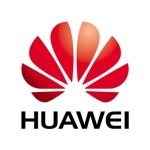What is our primary use case?
We are using Dell PowerStore for block storage to run Oracle databases, and we are using it for file servers with replication, and a lot of VMware data. By VMware, I mean it is all Windows-based applications we are using it for.
We are currently using two models of Dell PowerStore: 3200 and 5200.
How has it helped my organization?
Benefits of Dell PowerStore compared to Unity 400 and 650F, which we were previously using, are significant. Firstly, we benefit from extensive deduplication for non-database applications, which saves us a considerable amount of costs. Secondly, the performance has improved dramatically due to advancements in technology, such as TLC disks and NVMe technologies. These two factors, cost savings from deduplication and enhanced performance across applications, are the primary benefits we are experiencing.
Dell PowerStore has not helped our company improve operational efficiency to a great extent, because that depends on administrator tasks; operational efficiency is mostly from provisioning and using it through block, but then the benefits are mostly with TCO and performance.
What is most valuable?
The most valuable functionality we find in Dell PowerStore is deduplication, which saves us a lot of cost with a dedupe ratio of 4:1, good when compared to Unity of 1.6 or 1.7, allowing for almost 2x or 3x cost savings for us.
Replication is also more simplified, so we are happy with the replication feature, which is easy to configure and manage.
It's simple and easy to use.
What needs improvement?
There should be improvements in Dell PowerStore regarding scaling up and scaling out. When it's a cluster, provisioning is basically not automatic, and it doesn't do LUN balancing, so that automatic feature of LUN balancing between the cluster should be looked into.
I would like to see more user-friendly reporting on provisioning, LUNs, and more extensive reporting usages in the next version of Dell PowerStore, as that would help us.
Another area that should be looked into for Dell PowerStore include our current use of TLC disks; we cannot expand our cluster with a QLC disk, leading to some problems.
We primarily use Dell PowerStore for mid-range applications, and we are satisfied with its performance in that context. However, we have tested it with high-end applications that have significant performance requirements. In one instance, a single PowerStore array provided only 3 to 4 GBPS, which was not satisfactory. For applications requiring 15 or 20 thousand IOPS, PowerStore performs well. However, when an application needs around 50 thousand IOPS or 3 GBPS transfer rates, there tends to be noticeable lag.
Buyer's Guide
Dell PowerStore
October 2025
Learn what your peers think about Dell PowerStore. Get advice and tips from experienced pros sharing their opinions. Updated: October 2025.
868,787 professionals have used our research since 2012.
For how long have I used the solution?
I have been working with Dell PowerStore for close to two years.
What do I think about the stability of the solution?
I would rate the stability of Dell PowerStore as a seven out of ten. When it's clustering, it's not straightforward rebalancing, and there's a lot of tasks that need to be done to keep the array more performance-oriented.
How are customer service and support?
Technical support is good, and I would rate it an eight out of ten.
How would you rate customer service and support?
Which solution did I use previously and why did I switch?
We have worked with HPE, and compared to HPE, we believe that Dell PowerStore is good. We have also worked with Nutanix, which is also very good, and we feel Nutanix performs better than Dell PowerStore, while HPE is a little lagging in this area.
How was the initial setup?
Single-node deployment is a little easy. Multi-node clustering takes a lot of understanding. It should be simplified.
What about the implementation team?
We purchased Dell PowerStore through a partner. We do in-house deployment for Dell PowerStore, and Dell Technologies is always the implementer for us.
In terms of lifecycle management, we are connected through ESRS for Dell PowerStore, and all those reports get back to us from Dell EMC. We have our account manager who periodically schedules these upgrades.
What's my experience with pricing, setup cost, and licensing?
The price of Dell PowerStore is decent. It provides good value, and it is a fair value product.
What other advice do I have?
We have a two-node cluster. We are not directly using Dell PowerStore for optimizing workloads; basically, it is more of Oracle and SAP applications, only these things we are using it for.
We use Dell PowerStore for both Linux and Windows. They have an equal footprint. We have integration with Kubernetes.
Overall, I would rate Dell PowerStore a seven out of ten.
Which deployment model are you using for this solution?
On-premises
Disclosure: My company does not have a business relationship with this vendor other than being a customer.















Thanks for your insights. We're glad you like PowerStore's scalability, ease of use and overall value! Have you had a chance to explore the latest PowerStore and Dell AIOps software? If not, I'd definitely encourage you to check it out. We've added some great features recently, including performance headroom analytics, carbon footprint forecasting and our new AI Assistant chatbot. AI Assistant currently provides natural language synthesis of Dell's huge Knowledge Base -- and later this year will let you query your system directly for custom answers and recommendations based on your unique environment.